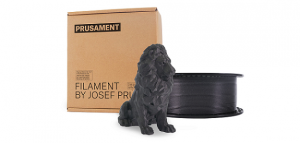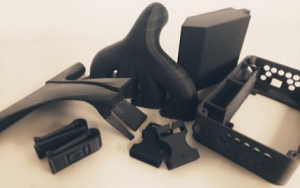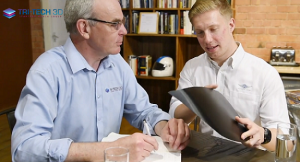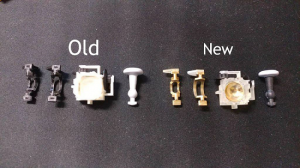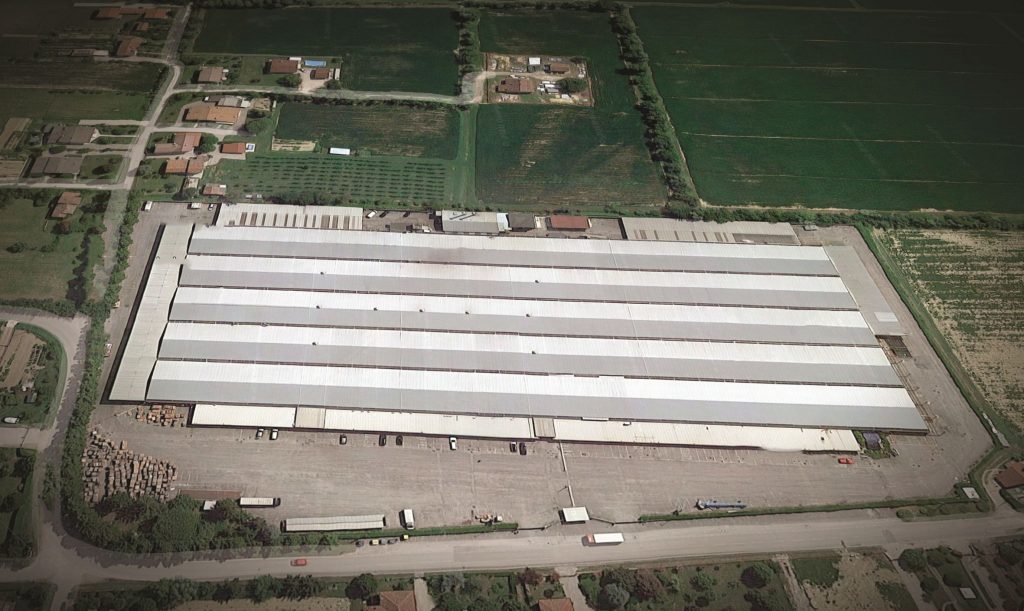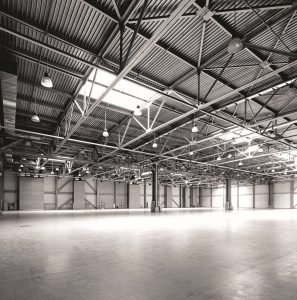We’ve got news about a contest to start off today’s 3D Printing News Briefs, followed by some business news and 3D printed jewelry. Weerg has announced the second edition of its “3D Printing Project Award” contest. Moving on, Bastian Solutions worked with Fast Radius to create a robotic materials handler using HP 3D printing, while Fast Radius announced that it has closed a round of Series B funding. Finally, an SLM 3D printer is being used by a person you might recognize to fabricate unique metal rings.
2nd Edition of Weerg’s 3D Printing Project Award Contest
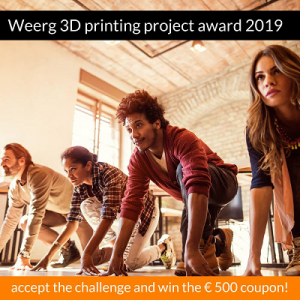 3D printing and CNC machining platform Weerg, based in Gardigiano, Italy, just announced the second edition of its “3D Printing Project Award” contest, which promotes creativity, experimentation culture, and innovation in design manufacturing. The company, which offers the largest Italian installation of HP’s MJF 4210 3D printers, invites designers and developers to create “an iconic object completely printed in 3D” for the chance to win a €500 Weerg coupon, and an interesting social media opportunity – star as the protagonist in a professional video that will highlight his/her designer skills, which Weerg will promote.
3D printing and CNC machining platform Weerg, based in Gardigiano, Italy, just announced the second edition of its “3D Printing Project Award” contest, which promotes creativity, experimentation culture, and innovation in design manufacturing. The company, which offers the largest Italian installation of HP’s MJF 4210 3D printers, invites designers and developers to create “an iconic object completely printed in 3D” for the chance to win a €500 Weerg coupon, and an interesting social media opportunity – star as the protagonist in a professional video that will highlight his/her designer skills, which Weerg will promote.
“After the success we obtained last edition, we decided to put to test once more our recently doubled and enhanced production department, and to give visibility to the most creative talent in 3D Printing. The Weerg Award was created to stimulate the potential and the desire to innovate of tomorrow’s designers who are starting to come face to face with the opportunities offered by additive manufacturing,” said Weerg’s founder Matteo Rigamonti. “In addition, it will allow us to maximize the performance of HP printers by creating very original and sophisticated items.”
You have until this Sunday, April 14th to submit your entry by posting it directly to Weerg’s Facebook and Instagram pages. The winner will be announced on Monday.
New Robot Warehouse Picker Features 3D Printed Parts
 Indianapolis-based Bastian Solutions, a Toyota Advanced Logistics company, has launched its Shuttle System: an efficient, flexible robotic materials handler with dexterity to spare. 45% of the final build-of-material (BOM) on the system’s robotic arm were 3D printed with HP and Carbon 3D printers. The durable polymer joints of the robotic picker were made with HP’s Multi Jet Fusion (MJF) technology, while its fingers and gripper were 3D printed out of unique materials, like EPU 40, using Carbon’s Digital Light Synthesis (DLS) technology. The company displayed its new Shuttle System this week at ProMat 2019 in Chicago.
Indianapolis-based Bastian Solutions, a Toyota Advanced Logistics company, has launched its Shuttle System: an efficient, flexible robotic materials handler with dexterity to spare. 45% of the final build-of-material (BOM) on the system’s robotic arm were 3D printed with HP and Carbon 3D printers. The durable polymer joints of the robotic picker were made with HP’s Multi Jet Fusion (MJF) technology, while its fingers and gripper were 3D printed out of unique materials, like EPU 40, using Carbon’s Digital Light Synthesis (DLS) technology. The company displayed its new Shuttle System this week at ProMat 2019 in Chicago.
“We envisioned that additively manufacturing specific parts would make the Bastian Solutions Shuttle System the most efficient and agile robotic picker available on the market. The additive manufacturing process will enable us to customize each robot picker to fit a customer’s particular warehouse environment,” said Ron Daggett, the Vice President of Technology and R&D, Bastian Solutions.
These parts were 3D printed at the Chicago headquarters of industrial-grade additive manufacturing facility Fast Radius.
Fast Radius Raised $48 Million in Series B Funding
 Speaking of Fast Radius, the company recently announced that it had raised $48 million in a Series B funding round, which it will use to continue expanding its production-grade AM platform through application engineering, sales teams, and software development. Its software platform, the Fast Radius Operating System (FROS), supports customers across the entire lifecycle of a product, helping them conduct engineering and economic evaluations, find potential applications, and 3D print industrial-grade parts at scale. The funding round was led by the company’s previous collaborator UPS, and Drive Capital was also a strong participant; other participants include previous investors Jump Capital, Skydeck, and Hyde Park Venture Partners.
Speaking of Fast Radius, the company recently announced that it had raised $48 million in a Series B funding round, which it will use to continue expanding its production-grade AM platform through application engineering, sales teams, and software development. Its software platform, the Fast Radius Operating System (FROS), supports customers across the entire lifecycle of a product, helping them conduct engineering and economic evaluations, find potential applications, and 3D print industrial-grade parts at scale. The funding round was led by the company’s previous collaborator UPS, and Drive Capital was also a strong participant; other participants include previous investors Jump Capital, Skydeck, and Hyde Park Venture Partners.
Pat McCusker, the COO at Fast Radius, said, “This additional funding will allow us to further expand our partnerships with leading global companies across aerospace, consumer, industrial, medical, and automotive verticals.”
Bam Margera 3D Printing Jewelry with SLM Technology
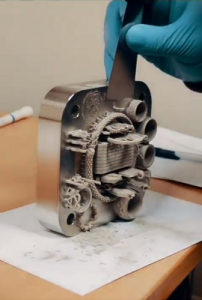 And now for something totally different…Bam Margera, a professional skateboarder, stunt performer, filmmaker, musician, and TV personality who rose to fame as one of the main members of MTV’s reality show Jackass from the early aughts, is now designing jewelry, which he 3D prints on an SLM Solutions 125 system that he purchased. He is selling the unique metal rings and pendants on his official BamMerch website.
And now for something totally different…Bam Margera, a professional skateboarder, stunt performer, filmmaker, musician, and TV personality who rose to fame as one of the main members of MTV’s reality show Jackass from the early aughts, is now designing jewelry, which he 3D prints on an SLM Solutions 125 system that he purchased. He is selling the unique metal rings and pendants on his official BamMerch website.
According to the website, “BamMerch is Bam Margera´s new lifestyle brand offering various jewelry and apparel, our store launched in December 2016.
“All items are crafted in Estonia, using combination of high-tech metal 3D printing and hand crafting to create extremely unique and detailed jewelry.”
All of the jewelry is 3D printed in-house out of sterling silver, and then carefully polished in ten stages. Some of the pieces, like the pretty Margeras Pendant with three intertwined hearts, are available for as little as $17, with prices ranging all the way up to $149 for the Skull Ring v2. Margera also offers a range of bundles. Check out the video below to see the 3D printing process for some of Margera’s rings, but be warned – if you go searching for more information about his 3D printed jewelry on Twitter or Instagram, there’s a lot of profanity and other NSFW content.
Discuss these stories, and other 3D printing topics, at 3DPrintBoard.com or share your thoughts in the Facebook comments below.


